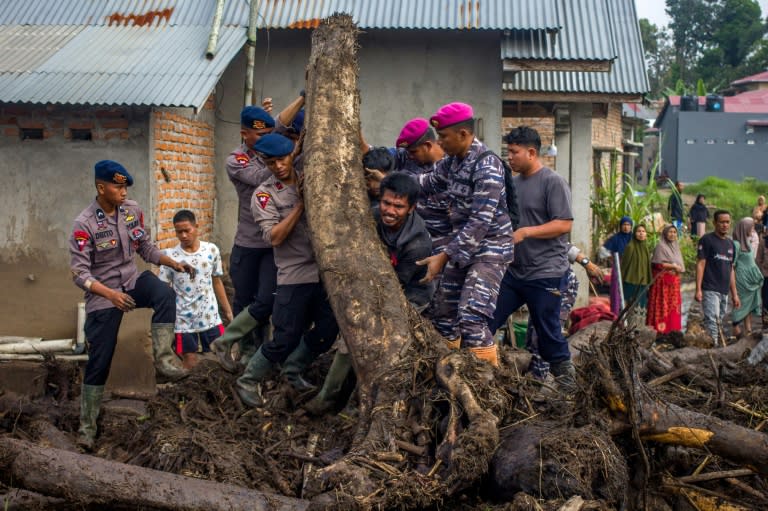Indonesia floods kill 67 as rescuers race to find missing

Indonesian rescuers raced Wednesday to find dozens of people still unaccounted for after heavy rains caused flash floods and washed volcanic debris into residential areas over the weekend, sweeping away houses and leaving 67 people dead.
Hours of torrential rain on Saturday caused mud and rocks to flow into districts near one of Indonesia's most active volcanos, destroying dozens of houses and damaging roads and mosques.
"Some of the missing ones have been found. According to the police identification, 67 people died," national disaster agency chief Suharyanto said Wednesday in a press conference, raising the death toll from 58.
He added that 20 people remained missing, with rescuers saying many of the retrieved bodies were found in or around rivers after being swept away by the deluge of volcanic material, mud and rain.
The mixture of ash, sand and pebbles carried down a volcano's slopes by rain is known in Indonesia as lahar, or cold lava.
Heavy equipment was deployed to clear debris from the areas worst hit by flooding and cold lava flows, which have affected transport access in six districts, said Suharyanto, who goes by one name.
More than 3,300 people have been forced to evacuate from affected areas.
To aid the rescue effort, authorities on Wednesday deployed weather modification technology, the term Indonesian officials use for cloud seeding.
In this case, it is being used in a bid to make clouds rain earlier so the precipitation's intensity is weakened by the time it reaches the disaster-struck area.
Indonesia is prone to landslides and floods during the rainy season.
In 2022, about 24,000 people were evacuated and two children were killed in floods on Sumatra island, with environmental campaigners blaming deforestation caused by logging for worsening the disaster.
Trees act as a natural defence against floods, slowing the rate at which water runs down hills and into rivers.
dsa-jfx/tym

